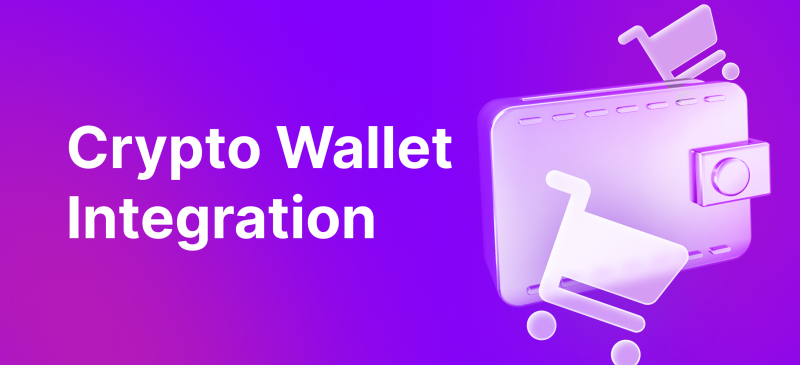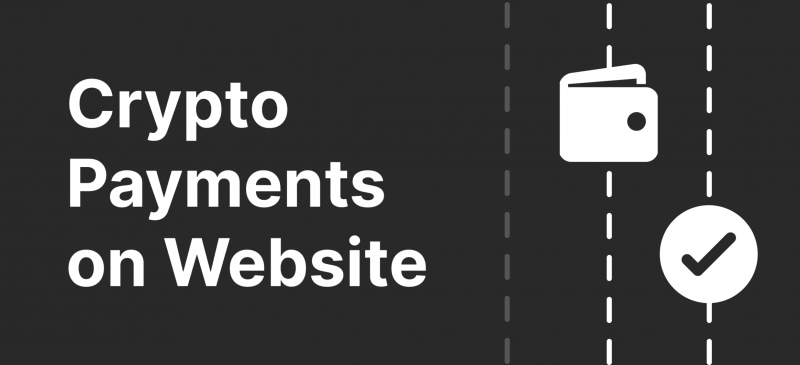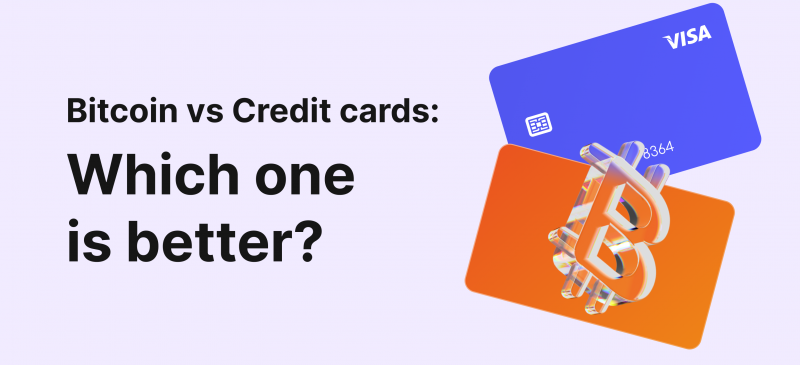Crypto wallet integration into business systems has become a game-changer, drawing interest from both companies and individuals eager to engage in digital currency operations.
This move simplifies how people manage and use their cryptocurrency, thanks to reliable third-party services that bridge digital wallets with platforms like online shops or exchanges. To accomplish all of this, it’s necessary to understand how to integrate a crypto wallet into the business infrastructure.
This article is a brief guide to the world of crypto technologies. It explains the crypto wallet integration API, its particularities and advantages, what should be taken into account in the process, and the main steps to implement such technology within the framework of an online store.
Key Takeaways
- Crypto wallet integration is the process of utilising an interface within distinct systems to enable transfers in digital assets.
- By integrating crypto wallet solutions into the online store, there is an opportunity to increase the customer base by offering a modern, safe and fast payment method.
What is a Crypto Wallet API Integration?
Crypto wallet integration is the process of connecting a digital wallet with an existing platform, such as an exchange or a merchant’s website, to facilitate the buying, selling, and transacting of digital instruments.
By linking a wallet with a platform, users can conveniently access their cryptocurrency funds through the platform, enabling them to engage in transactions involving virtual currencies seamlessly.

Additionally, multiple integration methods, such as API integration, software development kits (SDKs), and plugin integration, can be chosen based on specific requirements and preferences.
When integrating a crypto wallet, it is crucial to carefully select the appropriate wallet and integration method, giving utmost importance to security and compliance with regulatory standards.
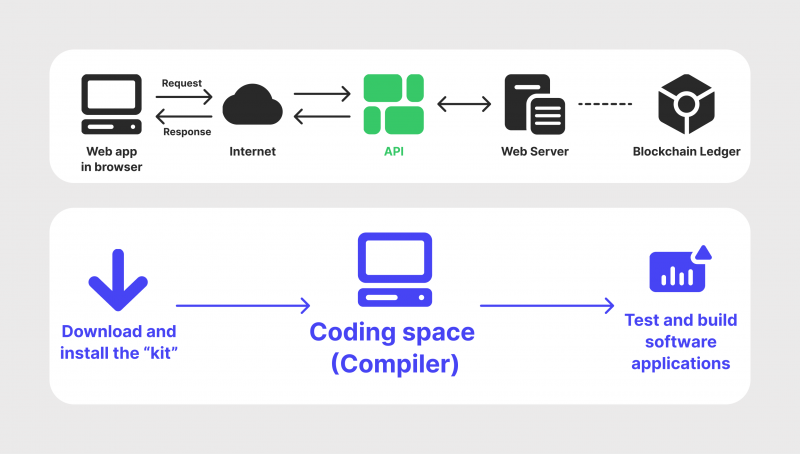
Developers can leverage the wallet API to seamlessly engage with blockchain networks and provide their users with wallet capabilities, eliminating the need to develop these functionalities from the ground up.
This encompasses many features, such as facilitating account creation, managing transactions, conducting balance inquiries, and much more. By utilising the wallet API, developers can streamline their building process and ameliorate the UX within their applications.
SDK and API technologies are interchangeable tools that allow the integration of crypto systems into the infrastructure of different platforms, systems and systems.
Integrating Crypto Wallet — Features and Selling Points
Crypto wallet integration brings forth a multitude of advantages, including heightened security measures thanks to multi-sig technology, enhanced user convenience, and faster transaction processing times.
By integrating a crypto wallet, both businesses and individuals are able to optimise their digital operations, improve the overall user experience, and promote the widespread adoption of virtual currencies.
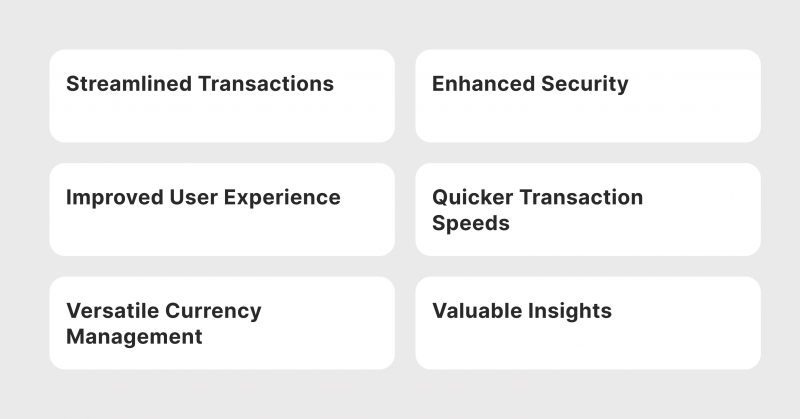
1. Streamlined Transactions
Integrating a crypto wallet with a third-party platform allows for seamless and hassle-free operations with virtual currencies. Users can easily transact without the need for multiple steps or complicated processes.
2. Enhanced Security
Integrating a crypto wallet with a platform provides users with increased security features, including two-factor and multi-signature authentication as well as encryption. These measures protect users’ digital currency funds from unauthorised access and potential threats.
3. Improved User Experience
With crypto secure wallet integration, conducting digital currency transactions becomes more convenient for users. They can easily manage their funds and transact directly through the platform, eliminating the need for separate wallet applications or additional steps.
4. Quicker Transaction Speeds
By integrating a wallet with a platform, users can experience faster transaction times. They can access their digital currency funds directly through the platform, eliminating the need for manual transfers or delays associated with traditional banking systems.
5. Versatile Currency Management
Many crypto wallets support multiple digital assets, allowing users to manage and transact with distinct cryptos using a single connected wallet. This multi-currency support simplifies the process for users who hold various digital assets.
6. Valuable Insights
Some crypto wallet integration techniques provide reporting and analytics features. This enables businesses to gain valuable insights into user behaviour and transaction trends. By analysing this data, companies can make informed decisions and optimise their strategies for better results.
Aspects to Consider When Choosing a Wallet to Integrate
When it comes to integrating a Bitcoin wallet for business, there are a few important factors that you should keep in mind. By carefully considering these key aspects, it becomes possible to ensure that the crypto wallet deployment process will be successful and meet the needs of users.
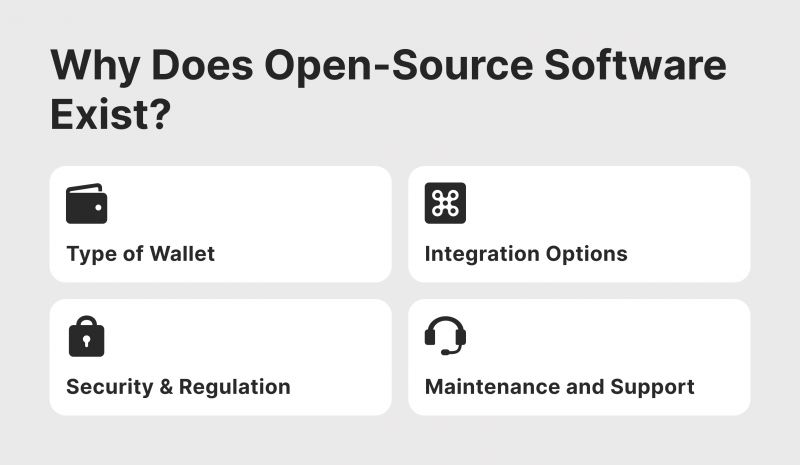
Type of Wallet
There are various kinds of crypto wallets out there, such as hot, cold, and software wallets. Each offers different levels of security, convenience, and features. It is essential to choose a wallet that aligns with your specific requirements and preferences.
Integration Options
Different integration methods, including API integration, SDKs, and plugin integration, are available for cryptocurrency wallets. The integration method you opt for should be based on your specific needs and the chosen wallet.
Security & Regulation
It is imperative to carefully consider the security aspects of the wallet you select, making sure it offers essential security functionality like two-factor authentication, encryption, and multi-sig authentication. Equally important is how compliant your chosen crypto wallet is with regulations.
Maintenance and Support
The presence of the required resources and expertise is crucial for maintaining and supporting the integration in the long run. This ensures that the integrated systems function optimally, providing users with a flawless experience and meeting their expectations. With the necessary tools and knowledge, the integration may become stable, resulting in increased efficiency and user satisfaction.
How to Integrate Crypto Wallet In Online Shop
The process of integrating a crypto wallet into the infrastructure of an online store involves a complex process consisting of several simple steps, each of which is of particular importance for the stability of the solution in the future, which will ensure a high level of performance and ease of maintenance of all its elements. These steps include:
Deciding on a Crypto Payment Processor
Choose a suitable cryptocurrency payment gateway compatible with the online shop or marketplace. The gateway should support the desired digital funds to facilitate operations smoothly and securely.
Installing and Setting Up a Crypto Wallet
It is recommended that a secure crypto wallet be established for managing and storing received virtual coins. Careful consideration should be given to selecting a wallet type that prioritises security, user-friendliness, and reconcilability with the designated payment gateway. This will ensure efficient digital funds management and reduce the risk of unauthorised access or loss.
Configuring Payment Gateway
Integrate the selected payment gateway with the online shop by configuring API integration and supported coins to enable seamless transfers and ensure an UX for customers.
Establishing The Crypto Payment Method
Customise the online shop’s checkout process to implement the crypto payment feature, modify the user interface, add payment buttons or widgets, and connect with the chosen payment gateway’s API for a streamlined payment process.
Conducting Testing and Launching
Conduct thorough integration testing to verify functionality and perform end-to-end operations to guarantee a smooth customer experience. After the testing is successfully completed, roll out the crypto payment solution for your clients to use discreetly and at their convenience.
Verdict
Crypto wallet integration in online shop operations presents numerous selling points for enterprises seeking to engage in digital capital operations. By fusing an e-wallet with an established platform, users can effortlessly take control of digital holdings, thereby enhancing convenience and fostering wider acceptance.
